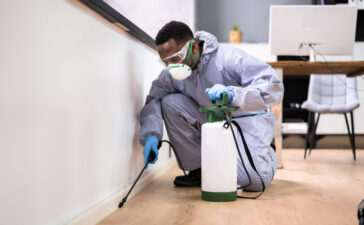Limestone is a versatile and beautiful natural stone often used in construction and landscaping due to its elegance and durability. However, like any material, limestone can suffer wear and tear over time, leading to damage and degradation. In this guide, we will explore how to restore this magnificent stone.
The Importance of Restoring Your Limestone
This stone, known for its architectural and landscaping purpose is susceptible to damage. Fortunately, limestone repair is easy and necessary because of the following:
Preservation of aesthetic appeal
One of the primary reasons for repairing limestone is to maintain its visual appeal. Limestone’s natural beauty and unique texture can be marred by stains, discoloration, and cracks. Repairing these issues helps restore the stone’s original elegance.
Ensuring structural integrity
In addition to its aesthetic value, limestone also serves structural purposes in many applications. To ensure the stone remains strong and functional, repairs are vital. Neglecting structural issues can lead to further damage or safety hazards.

Prolonging longevity
Limestone can last for centuries with proper care and maintenance. Repairing minor issues promptly can extend the stone’s lifespan and delay the need for more extensive and costly repairs.
The Repair Process
The repair process involves a series of steps designed to address the specific type of damage and restore the stone’s appearance and structural integrity. The steps for the repair are as follow:
Assessment and diagnosis
The first step in any repair project is to assess and diagnose the damage. A thorough inspection helps determine the extent and nature of the problem, whether it’s staining, cracking, or chipping.
Cleaning and surface preparation
Properly preparing the limestone surface is crucial. Cleaning may involve removing dirt, biological growth, or stains using the appropriate cleaning solutions and methods. This step helps ensure that the repair materials adhere effectively to the stone.
Repairing stains
To repair staining, various techniques can be used, such as poultices, stain removers, and chemical cleaning. The choice of method depends on the type and severity of the stains.
Filling and patching
For cracks, chips, and spalling, filling and patching are typically required. This involves applying a compatible adhesive, filler, or epoxy that matches the colour and texture of the surrounding limestone.

Colour matching and finishing
Achieving a seamless repair often requires careful colour matching. Skilled technicians use pigments, tints, and dyes to ensure the repaired area blends seamlessly with the surrounding stone. Once the repair has been completed, finishing and polishing may be necessary to restore the stone’s natural sheen.
Sealing and protection
To prevent future damage, limestone surfaces are often sealed with an appropriate sealer or protectant. This helps guard against staining, moisture penetration, and UV damage.
Ongoing maintenance
Proper ongoing maintenance, including regular cleaning and resealing, is essential to protect and extend the life of repaired limestone surfaces.
Conclusion
Repairing limestone is important to maintain the visual appeal and structural integrity of this stunning natural stone. Whether you’re dealing with stains, cracks, or other forms of damage, understanding the importance of repair and considering professional services can help you enjoy the timeless beauty of limestone for years to come.




